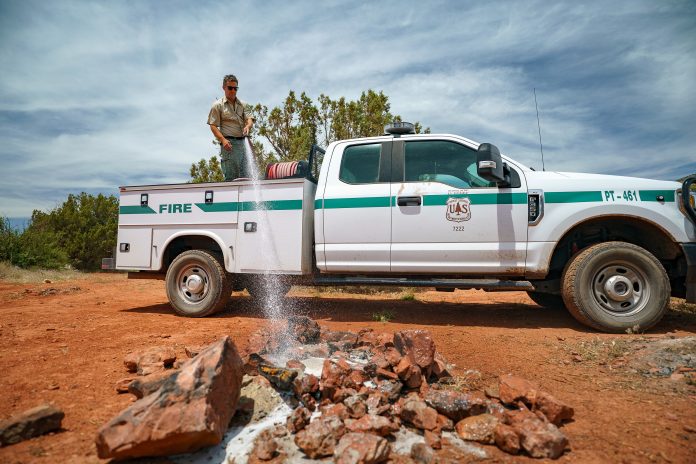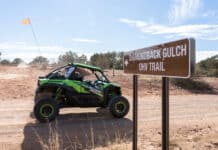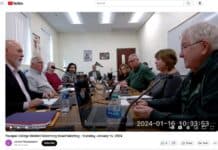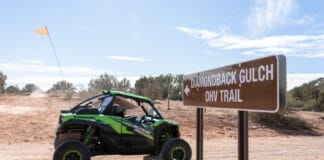
Informing people that they can’t build a cheerful, light-giving campfire is not an easy job, but John Artley, a fire prevention technician for the Coconino National Forest, is working overtime doing that as he patrols National Forest lands surrounding Sedona.
Artley describes his job as “a combination firefighter, interpretive ranger and law enforcement officer,” or “a firefighter who makes a lot of public contacts.”
Whatever the title, he’s the tip of the spear of Coconino National Forest’s effort to minimize human-caused wildland fires this year.
This goal led to implementing fire restrictions earlier in the season than usual, and Artley, one of two fire prevention technicians for the Red Rock Ranger District, is working sometimes six days a week, 12 hours a day making contacts, checking campsites and, often, drowning prohibited campfires with a truck-mounted water pump.
He also carries an infrared thermometer to check the temperatures of fire pits, but he said he can usually tell just from the “lighter, fluffier, white feathery ash” that a fire ring is still hot.
Because the Red Rock Ranger District has an unusually high number of recreational support staff, the recreation staff also assist with fire prevention.
Though firefighters are predicting average fire potential in the high country in and around the Verde Valley this fire season, coronavirus has altered just about every other aspect of the season, from the public’s patterns of behavior to firefighters’ uncertainty about being exposed to coronavirus from each other during large wildland fire operations.
The disruption to normal patterns has made Artley’s fire prevention patrols more tense than usual.
“I think most of us are kind of on edge,” he said.
With sports, water parks and other activities closed this spring, Artley believes the forest has been busier than normal. He said the primitive campsites off of Forest Road 525 have been “inundated” this season, and he suspects people who are less familiar with the rules of camping in the forest are venturing out in higher numbers.
“A lot of people haven’t been taking [fire restrictions] seriously this year …. They’ve definitely had a different attitude this year,” Artley said. “I don’t want to say ‘idiots,’ more ‘irresponsible people.’”
Camping without a campfire, usually a central part of the overnight experience, is in some ways a big ask of the public, but Artley said the sacrifice dramatically reduces the number of abandoned campfires he finds. The fire ban makes such a difference in his experience that Artley said he and his colleagues divide the summer into “restrictions” and “non-restrictions.”
Reducing the number of unattended fires in the forest is important because the coals of fires can stay hot for days, Artley said.
On Friday before Memorial Day weekend, Artley was bracing for a busy few days of driving for hours on bumpy dirt roads and making contact with people with varying attitudes and states of mind.
“The holiday weekends are so draining,” he said.


















